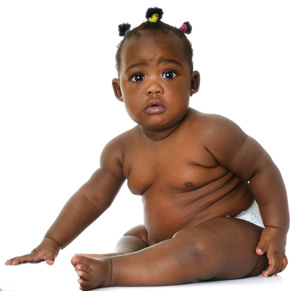 Baby fat
Baby fat
That chubby little cherub might not grow out of the baby fat, after all. New research finds that fully one-third of babies in the U.S. are either obese or are at risk for obesity, and those who are obese at 9 months of age have the highest risk of being obese at 2 years. Researchers are not suggesting babies be put on diets; they say parents of obese babies should be extra careful about food choices.
Autism fraud
The study that scared thousands of parents off of the MMR vaccine because it linked that vaccine to autism in children was “an elaborate fraud,” according to a seven-year investigation. The 1998 study had already been retracted by the medical journal The Lancet; the study’s author, Dr. Andrew Wakefield, has been stripped of his medical license. Link to the full report in the British Medical Journal at parentmap.com/more.
Sibling risk
A huge national study has found a possible link between autism and the spacing of siblings. The study looked at more than 660,000 second-born children and found that they were more than three times more likely to be diagnosed with autism if they were conceived within a year after the birth of an older sib. One possible explanation for this: Women may have depleted levels of certain nutrients — and higher levels of stress — after a recent pregnancy. Link to more at parentmap.com/more.
Jitterbugs
Is your kid getting too much caffeine? Probably, according to researchers who found that 75 percent of kids between the ages of 5 and 12 are getting a jolt every day. A study finds that kids ages 5–7 drink about 52 mg. of caffeine daily — that’s more than a full can of soda. Older kids, ages 8–12, drink more than twice that amount. No surprise: The study also found a significant correlation between caffeine intake and lack of sleep. Researchers think most parents just aren’t aware of how much caffeine their little ones are consuming; link to a cool chart at parentmap.com/more.
 ‘Sweatheart’ spending
‘Sweatheart’ spending
The national belt-tightening trend could have a warm, fuzzy effect this Valentine’s Day: Husbands are now more likely to give their wives sweaters or other practical items than in previous years. A survey by the National Retail Federation found couples cut back on spending on their significant other, forking over an average of $63.34 last year (down from $67 the year before). Men usually spend twice as much as woman; about $135. This year, fewer will spend that money on jewelry and nights on the town, choosing instead to get clothing, candy and flowers for their sweeties. But puppy love is still going strong: People were predicted to spend an average of $3.27 on their pets last Valentine’s Day. That’s up from $2.17 the previous year.
—Kristen Russell


